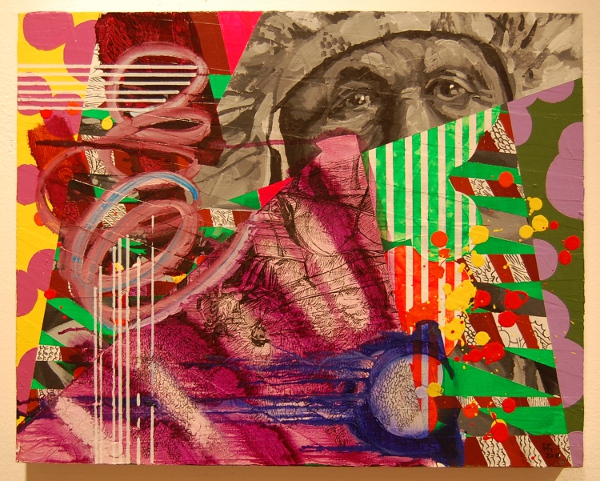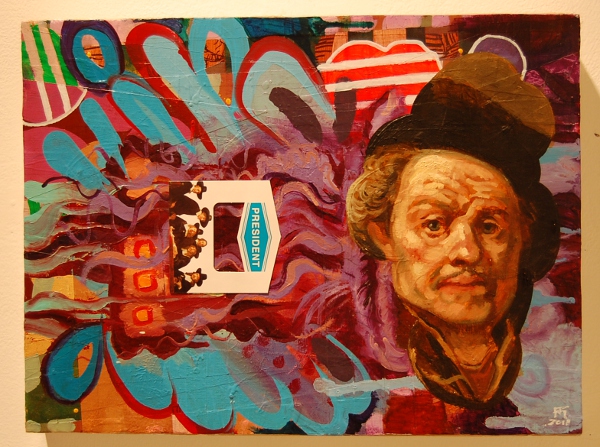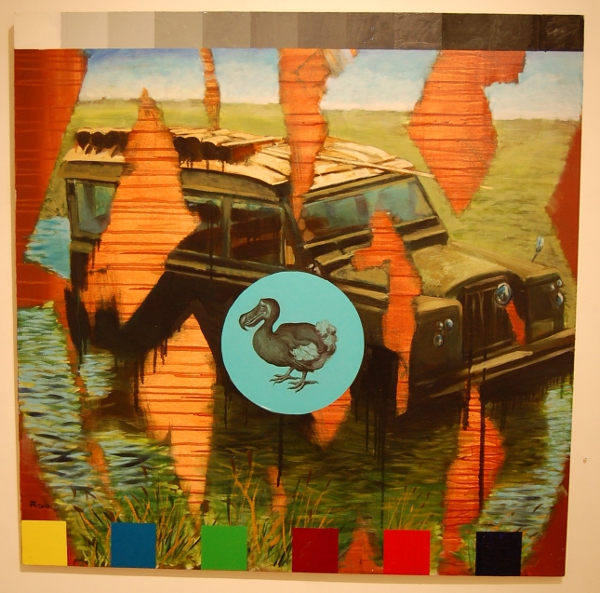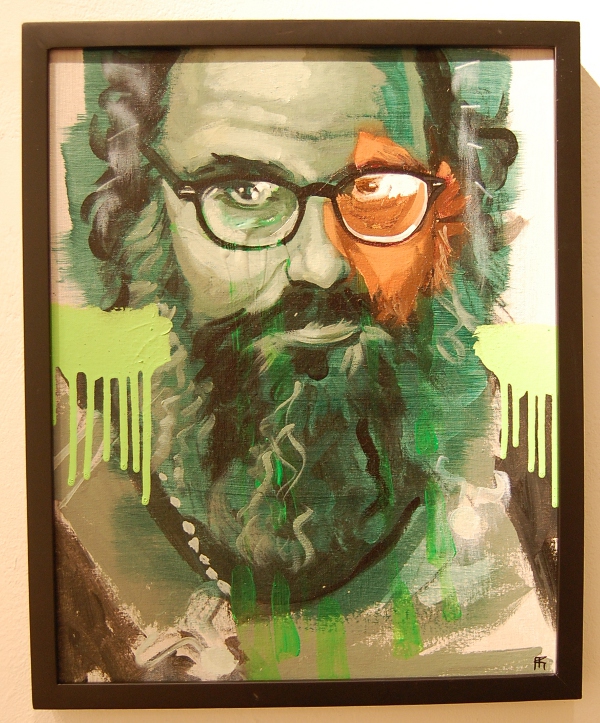
Reza Ghanad and the absurd at LaPelle Gallery
Colorful snippets, historical and pop-cultural faces and extinct animals can all be found at the Rodger LaPelle Gallery this month. The artist on display is Reza Ghanad, and his style is a sort of cross between street art, collage and portraiture. In this show, Ghanad’s style can be divided into two apparent styles. First, and most plentiful, are his bright, layered amalgamations of patterns and images. Second, is his series of stylized portraits of various writers from William S. Burroughs to Albert Camus.
Ghanad is a 2010 graduate of the Pennsylvania Academy of Fine Arts, and he represents its ranks well. The LaPelle show, entitled “Credo Que Absurdum,” which means “I believe because it is absurd,” definitely embraces the absurd and contradictory elements of the mind (and not just because Camus is in attendance). The canvases brim with wild patterns but also snapshots from society, like medical eye charts or a dubious box of Dutch Masters paired with a reproduction of a Rembrandt. His anchors to external sources are loose, however, and take a backseat to the sometimes-wild ride of his painterly elements.
In many of the images, Ghanad’s layering techniques are the most obvious strong point. Trying to follow bits of any one pattern in these paintings is often difficult due to the sheer number of layers and the skewed directions of the overlapping paint. The effect tends to disorient the viewer at best and otherwise distracts the tracing of one motif with another pattern altogether. In other words, it is very easy to get lost in these crisscrossing conglomerations. While his canvases display a definite social and design intelligence, they also defy an overly cerebral analysis.
One of the most solid pieces in the exhibit is “Lost Dodo.” At the top of the image is a gradient from white to black, and at the bottom is a six-color palette of squares, as if Ghanad was utilizing these elements as a reference point in its creation, betraying a probably false process. Sandwiched in between is the representation of a safari-like truck wading through water on some sort of expedition. This image is “torn,” revealing a further layer of painted “wood” as if the painting itself is somehow worn or damaged. In the very center lies a light blue circle filled with an illustration of a dodo bird. This painting possibly holds environmental implications, but the nature of the bird is, as with much of Ghanad’s work, very open-ended; it is both a stand-alone element but also the focal point which ties everything together. The extinct bird, perhaps, exemplifies the idea of hiding in plain sight or being alone in a crowd.
At the other end of his style are Ghanad’s portraits of writers. The renditions are all very recognizable but also tinted with a bluish-green glow. Green drops and orange patches surround Allen Ginsberg, while tiny symbols of pills, bats and UFOs encircle the head of Hunter S. Thompson. These paintings are all present right at the entrance to the show and provide a pop-cultural or intellectual hook for anyone who enters the gallery. Once the recognizable catches the eye, the unwitting patron gets baited along to the more complex and less concrete artworks. This show is both a carefully conceived creation and a psychedelic mess. LaPelle Gallery presents Ghanad’s acute and absurd art. Whether you believe or not, is up to you.
The Rodger LaPelle Gallery is located at 122 N. Third Street in Old City; 215.592.0232
Recent Content
-
Artsarticle ·
-
Artsarticle ·
-
Artsarticle ·




